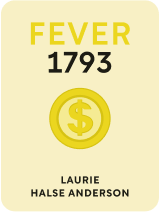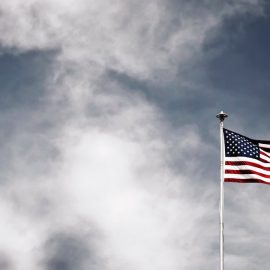

This article is an excerpt from the Shortform book guide to "Fever 1793" by Laurie Halse Anderson. Shortform has the world's best summaries and analyses of books you should be reading.
Like this article? Sign up for a free trial here .
Looking for Fever 1793 discussion questions inspired by Anderson’s historical fiction book? How can you compare the events in the book to your life today?
Laurie Halse Anderson’s book Fever 1793 is a historical fiction novel based on the yellow fever epidemic that happened in 1793. By looking at how the people handled the fever, we can examine how we’ve changed as a society.
Continue on for Fever 1793 discussion questions.
Fever 1793 Discussion Questions
Fever 1793 details the yellow fever plague in Philadelphia a decade after the Revolutionary War through the eyes of young 14-year-old Matilda Cook. With great respect for historical accuracy and a keen voice, Laurie Halse Anderson describes the fear and decay that destroyed the nation’s capital and killed thousands of people in three months. Anderson’s keen attention to human emotions and connections lifts this coming-of-age story from the depths of darkness to the light of courage and survival.
Below are Fever 1793 discussion questions inspired by the book.
Finding a Scapegoat
- The affluent townspeople point the finger at refugees for starting the fever. Yet, no evidence supports this theory.
- Why do you think the society men and Mrs. Ogilvie were so quick to blame the wharf residents for the fever?
- Is it fair to place the blame on a few when many are experiencing the same illness? Why or why not?
- What is one example of this type of scapegoating in current society?
- Why do you think people need someone to blame?
- What are the possible repercussions of blaming a certain population for something that affects an entire society?
Reflect on Life During an Epidemic
- Fever 1793 is about a terrifying epidemic that kills thousands of people in just a few months, but there is more to the story. What else can you take away from Laurie Halse Anderson’s novel?
- What is one characteristic you would use to describe Matilda at both the beginning and the end of the book? How does she demonstrate this characteristic?
- How does Matilda’s character change over the course of the story? What are two events that cause this shift in character? Why do they affect her so much?
- What is one moment in your life in which you had to adapt and grow?
- How did you change, and how did it affect your life?
Plan for Hardships
- Matilda was lucky to survive the fever and ensuing hardships, but many around her were not so lucky. Are there things you can learn about survival from Matilda’s experience?
- What are two strategies Matilda used to persevere during the fever months?
- Would you be able to persevere in the same way if you had to face a similar situation? Why or why not?
- The next time you face a difficult situation, what lessons from Matilda’s journey could help you get through it?

———End of Preview———
Like what you just read? Read the rest of the world's best book summary and analysis of Laurie Halse Anderson's "Fever 1793" at Shortform .
Here's what you'll find in our full Fever 1793 summary :
- What the yellow fever epidemic in 1793 in Philadelphia looked like
- How this epidemic exposed the vulnerability of everyone, including the wealthy
- How an epidemic can impact a young person






